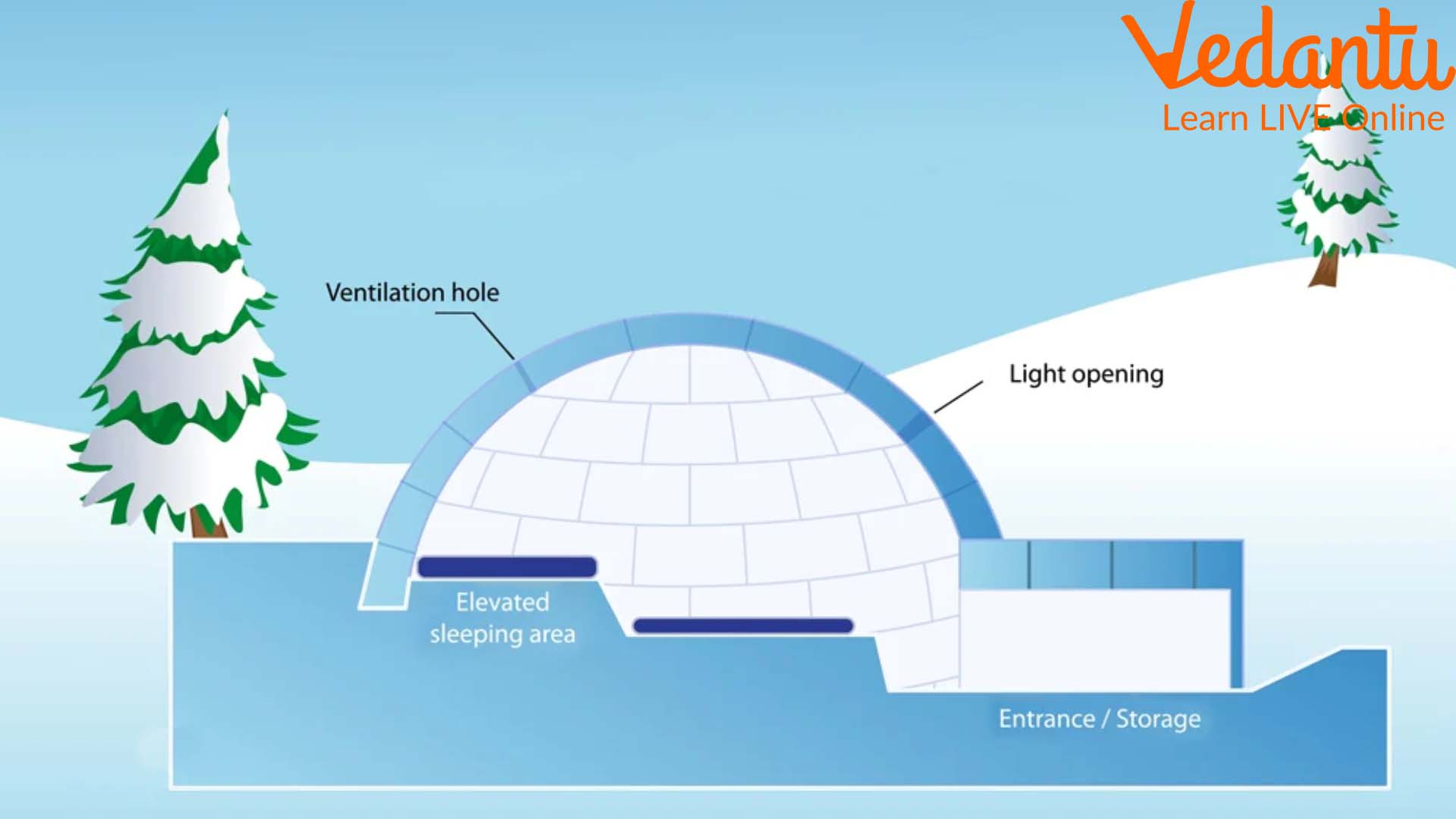Discover the Science Behind How an Igloo Keeps You Warm
You are scouting a snowy landscape with a temperature way below the freezing temperature. Everywhere is thick snow and you cannot figure out how to keep yourself warm. Suddenly, you remember that the Eskimos live in snow houses called igloos. These are simple houses made with ice stacked on each other.
How can living inside an ice house or igloo keep you warm? What is the science behind it? How does cold negate cold? Well, all these answers can be obtained when you know the actual scientific fact behind an igloo. To understand the fact, we need to find out why we actually feel cold.
The Science Behind Feeling Cold
When our body loses heat, we feel cold. According to physics, a hotter body loses heat to a colder one. When the surrounding is not as hot as your body, you will lose heat and feel cold. On the contrary, when the surrounding is hotter than you, your body will absorb heat. It is then you will feel hot.
It means that heat is a form of energy that travels from a hotter body to a colder one. It happens until the temperatures of both bodies become the same. The process of transfer of heat happens to achieve thermal equilibrium.
How Does an Igloo Keep You Warm?
Now the real question arises. How will an igloo provide your warmth? You are still in a colder environment when you are inside an igloo. To understand this concept, let us find out what happens when you use a blanket in the winter season.
A blanket is made of insulating natural fibres. These fibres have air pockets between them. These air pockets trap air and create a more insulating cover you can use to keep yourself warm. It means that a blanket will not create heat on its own rather it will trap your body heat from escaping and will make you feel warmer.
The same science applies to the warmth of an igloo house. It is made of ice scavenged from the colder surrounding. The ice is then compressed to form blocks trapping air inside. When these blocks are stacked one above the other, they form a house. The heat inside an igloo remains trapped and it helps to keep you warm even below the freezing temperature. Let us find out what an igloo is and how it is made.

The Igloo Effect and Science Behind it
What is an Igloo?
As mentioned earlier, an igloo is formed using compressed ice. It is not possible to make carved ice blocks with the simplest tools and it will take forever to do so. An igloo of Eskimos is built with blocks of ice made with compressed snow.
Snow is flaky and contains air inside. When compressed, these particles form comparatively stronger ice blocks. You will be surprised to know that the snow blocks contain almost 95% air. The same concept of a blanket can be utilised in this scenario. The air pockets turn out to be remarkable insulators.
If you see the inside of an igloo, you will find out that the makers have dug a trench and then built a hemispherical snow house on it. An igloo also contains a ventilation hole to keep the flow of oxygen proper. The entrance is always a little below ground level. Well, there is absolute science behind it.
The lower level of the entrance does not let the heat and hot air inside an igloo pass out that easily. The colder air will settle down and keep the people comfortable whereas the hot air will pass through the ventilation keeping a flow of air constant from the entrance. You can relate to this with the chimney effect.
The Igloo Effect: The Scientific Fact at Play
Now that we have studied what an igloo is, let us find out how it keeps us warm. As mentioned earlier, it is a hemispherical snow house with an entrance a little below the ground level. A ventilation hole is kept above the top of the snow house.
The igloo effect explains that the people inside will radiate heat. This heat will warm up the air inside causing a rise in the temperature inside an igloo. The hot air will rise up and the colder air will settle down.
Due to this, the hot air will pass slowly through the ventilation hole on the ceiling and cause a small difference in air pressure. Due to this difference, fresh air from the outside will enter gradually inside an igloo and deliver the required amount of oxygen.
The insulation effect of snow will automatically increase the temperature inside an igloo keeping the residents warm. This is how to make an igloo with compressed snow and stay alive in freezing temperatures with the help of compressed snow.
How Warm is It Inside an Igloo?
The Eskimos are called the igloo animals. They do not keep animals inside. Animals in those Arctic areas develop fur to withstand cold temperatures. An igloo, on the other hand, can maintain an average temperature of 16 ℃. In fact, the temperature closer to an Eskimo turns out to be closer to the body temperature. The temperature closer to the snow blocks can be 1℃.
Why Staying Inside an Igloo is Better?
If you ask where are igloos found, the answer will be in the Canadian Arctic region where the Inuit people reside. You will find this type of temporary house built by the Eskimo people living closer to the Arctic Circle.
The outside temperature in this region ranges to -50℃ on average. You can clearly understand that surviving inside an igloo is much easier than outside. This is how an igloo is built and how it keeps the people inside warm. The insulating effect of snow and its brilliant scientific design make it happen.







